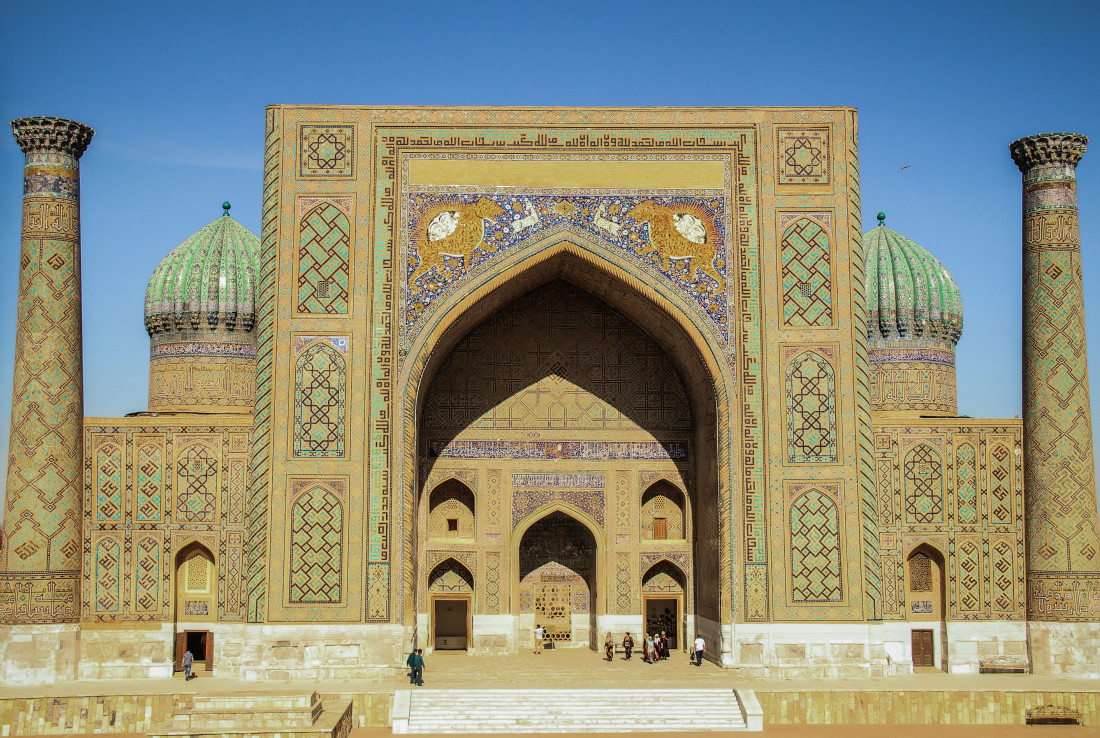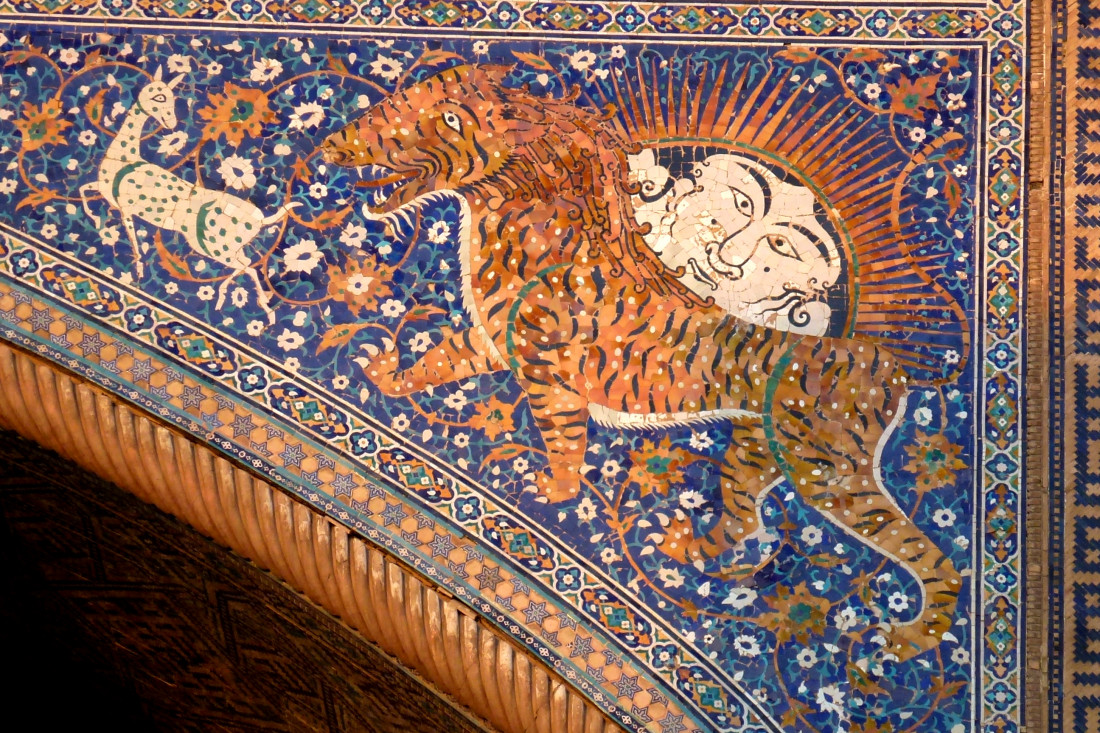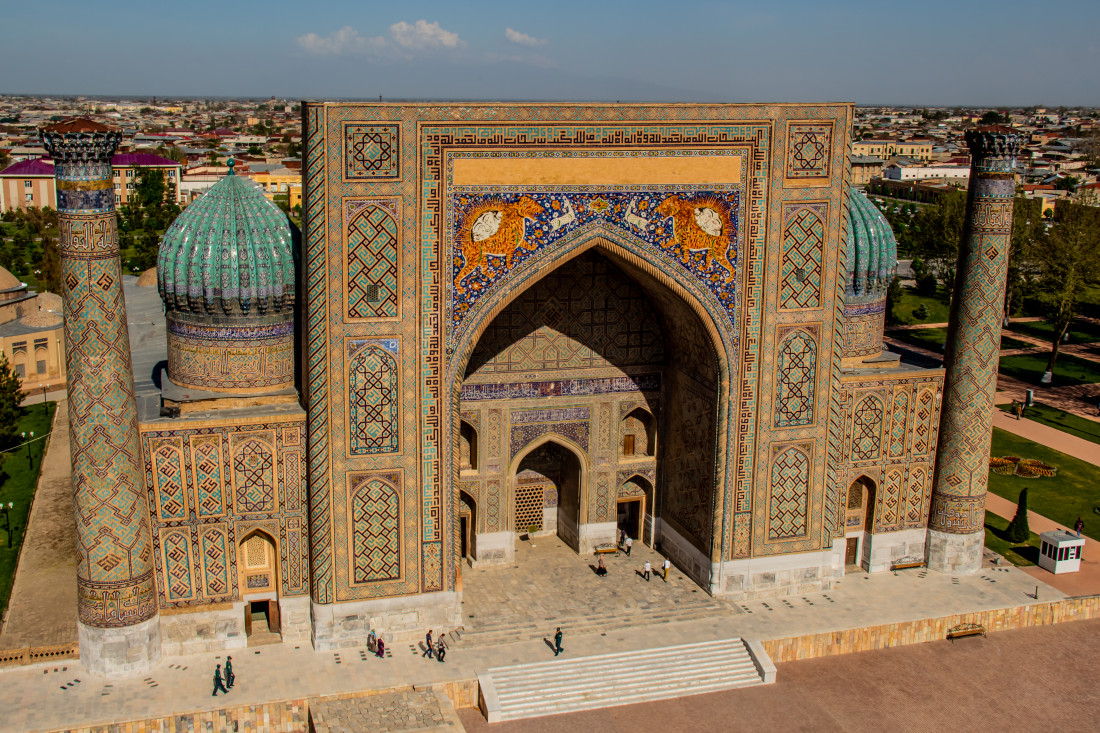One of the religious buildings of the XVII century in Samarkand – the Sherdor madrasah is part of the Registan architectural ensemble. For several centuries, the madrasah was a well-known Muslim educational institution, where outstanding philosophers and theologians studied.

The madrasah was built by order of Ashtarkhanid Yalantgush Bahadur on the site of the dismantled khanaka of Ulughbek in 1619-1636. The Samarkand architect Abdulzhabbor was involved in the construction, and the decoration was made by the master Muhammad Abbas.
The design is made in the traditional Central Asian style, and the main facade impresses with a grand entrance portal topped with a pointed arch.
At first, the building was planned to be named after governor Yalangtush Bahadur. However, the people called the building "Sherdor", which translates as "the abode of lions".

The madrasah got its modern name due to the unique decor on the tympanum of the front portal, which depicts a scene of a fantastic beast hunting in the guise of a snow leopard on a white gazelle in the rays of the rising sun.
Although according to the traditions of Muslims, it is impossible to depict animals or people in sacred places, but this madrasah has become an exception.
The image of predators hunting deer implies the need for students to chase knowledge, as lions chase their prey, and absorb wisdom, as lions eat captured animals." The person's face symbolizes the deity and warns: "you need to remember that you are not immortal, even if you are a predator."
Rui Gonzalez de Clavijo, ambassador of King Henry III of Castile and Leon at the Court of Timur, wrote in his writings that before the Golden Age - the period of Timurid rule, a leopard (lion, leopard) was depicted on the standards and coats of arms of Samarkand, which, according to a unique legend brought to us by the Arab historian Abu-Said Abdu-Rahman Ibn Mukhamad Idris, descended from the mountains during the laying of the city of Samarkand and blessed the construction.
As the legend says:
"When the city of Samarkand was founded, a leopard— palyang descended from the Zeravshan Mountains. He wandered around the walls, approved the construction and retired back to the mountains. Since then, residents of Samarkand have been called leopards. Their standards and coats of arms depicted a leopard. Samarkand residents are proud and wayward, do not tolerate lies and do not seek wealth, their soul lies only for glory and honors. The sages say that the Land of Samarkand has such an effect and the Samarqandans, whatever country you come to, they are different from other people. Their soul is open to the beautiful, among them there are many great masters in creating miracles that adorn the world."

For almost three centuries, Sherdor was the most famous educational institution among Muslims.
The plot depicted on the portal of the madrasah eventually became one of the national symbols of Uzbekistan.
The dimensions of the Sherdor madrasah and the Ulugbek madrasah located opposite it are almost the same. According to the architect's idea, the buildings were supposed to be a mirror image of each other, a unique "kosh" technique was used here.
However, over time, the area has slightly changed the relief, so the Sherdor is slightly lower than the Ulughbek madrasah. The decor of the building is painted with Kufic inscriptions, sayings of the Prophet Muhammad and fragments from the holy Koran.
Comment